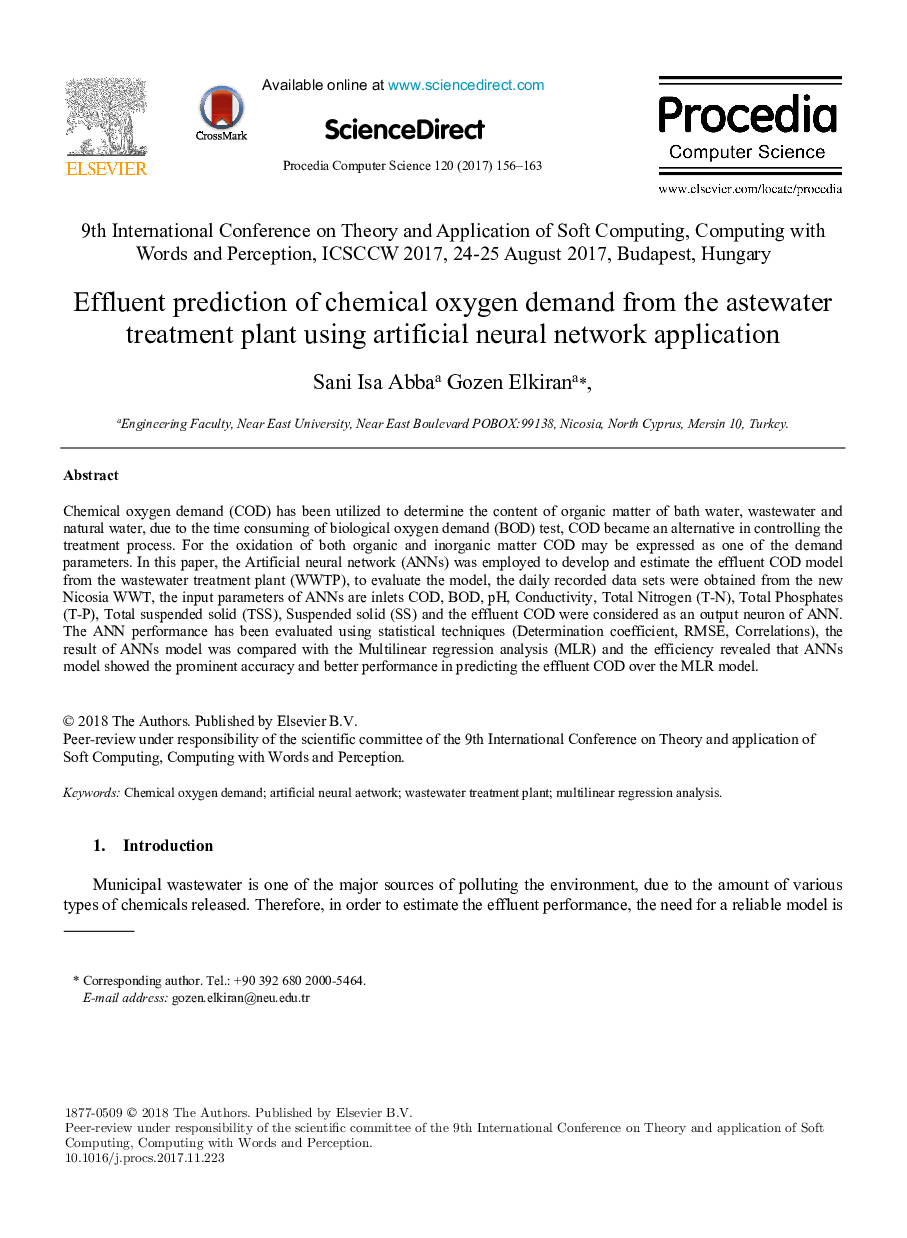| Article ID | Journal | Published Year | Pages | File Type |
|---|---|---|---|---|
| 6901626 | Procedia Computer Science | 2017 | 8 Pages |
Abstract
Chemical oxygen demand (COD) has been utilized to determine the content of organic matter of bath water, wastewater and natural water, due to the time consuming of biological oxygen demand (BOD) test, COD became an alternative in controlling the treatment process. For the oxidation of both organic and inorganic matter COD may be expressed as one of the demand parameters. In this paper, the Artificial neural network (ANNs) was employed to develop and estimate the effluent COD model from the wastewater treatment plant (WWTP), to evaluate the model, the daily recorded data sets were obtained from the new Nicosia WWT, the input parameters of ANNs are inlets COD, BOD, pH, Conductivity, Total Nitrogen (T-N), Total Phosphates (T-P), Total suspended solid (TSS), Suspended solid (SS) and the effluent COD were considered as an output neuron of ANN. The ANN performance has been evaluated using statistical techniques (Determination coefficient, RMSE, Correlations), the result of ANNs model was compared with the Multilinear regression analysis (MLR) and the efficiency revealed that ANNs model showed the prominent accuracy and better performance in predicting the effluent COD over the MLR model.
Related Topics
Physical Sciences and Engineering
Computer Science
Computer Science (General)
Authors
Sani Isa Abba, Gozen Elkiran,
